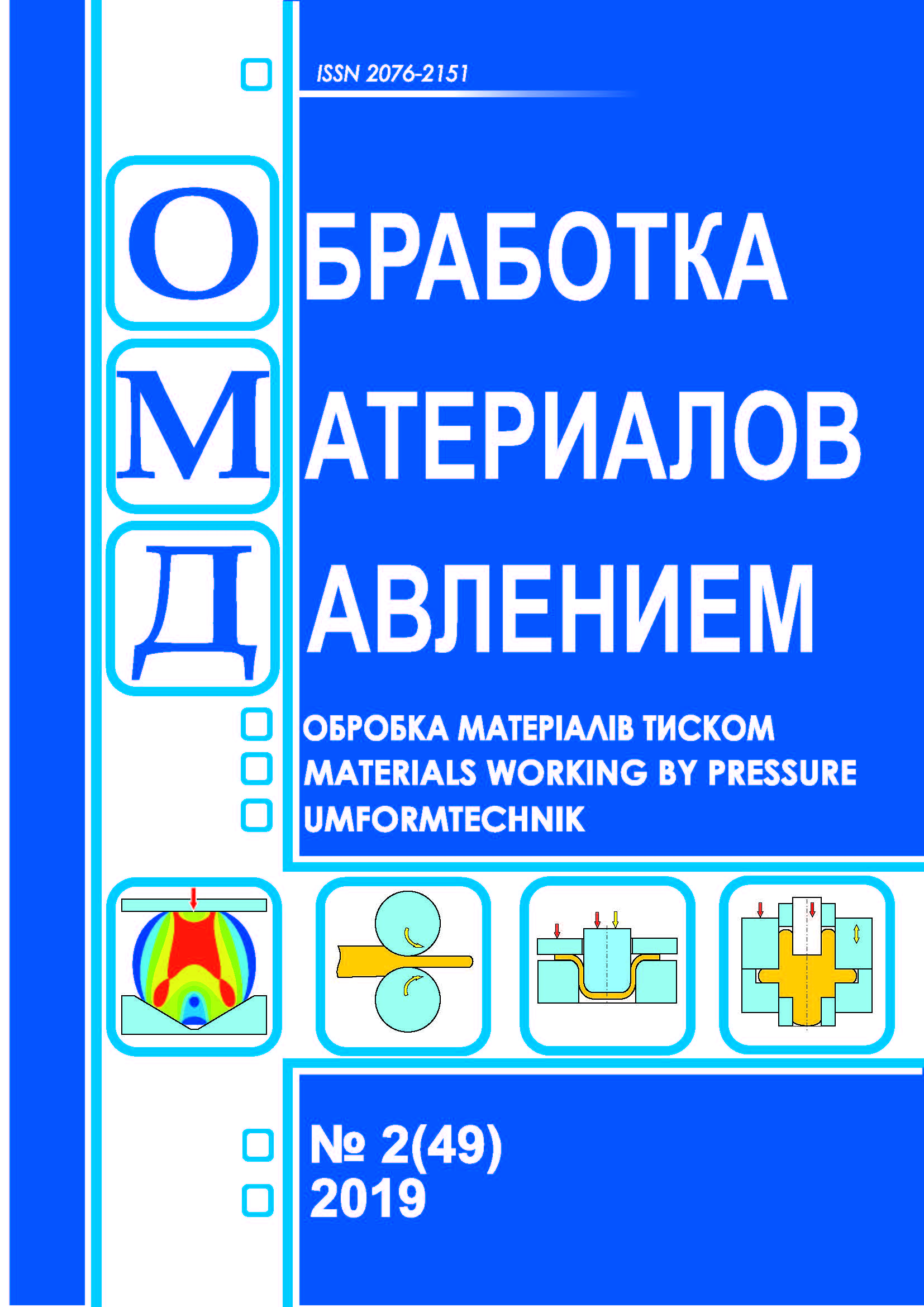Reducing pressure by rotating the press tool during radial pressing of tubular billets of metal powders
DOI:
https://doi.org/10.37142/2076-2151/2019-2(49)143Keywords:
compaction powders; torsion under pressure; compactibility; plasticity; radial isostatic pressing.Abstract
Kuzmov A. V., Shtern M. B. Reducing pressure by rotating the press tool during radial pressing of tubular billets of metal powders // Material working by pressure. – 2019. – № 2 (49). - С. 143-149.
Axial pressing of tubular blanks of metal powders combined with rotation of the inner and outer walls of the mold with different angular speeds relative to each other is investigated. This assumes complete adhesion of the material of the compact to the inner and outer walls of the mold. The behavior of the pre-press material is described by the plasticity model of a compressible continuum with strain hardening on the basis of the loading surface, obtained earlier by one of the authors, and the associated law of plastic flow.Due to the homogeneity of the stress-strain state in the volume of the pre-press, we managed to find expressions for the hardening and the pressing pressure in an analytical form. The obtained analytic solution is multi-parametric and describes the effect on the pressure of pressing of the material hardening constants, the initial and final density of pressing, the degree of mutual rotation of the press-form walls. On the basis of the solution obtained, it has been established that the short-term application of shear deformations due to the mutual rotation of the elements of the press tool, in any case, makes it possible to reduce the value of the current working pressure during pressing.On the other hand, during the long process of pressing, the hardening of the material of the solid phase of the porous body, due to the additional shear strains, can lead to an increase in the radial pressure at the same final density. The moment of transition from the stage of pressure reduction to the stage of its increase significantly depends on how hard the material of the powder is.That is, it is advisable to use the rotation of the matrix for powders whose material is closer to ideally plastic. In most cases, the rotation of the die throughout the pressing process is advisable to use sufficiently porous blanks only with not very significant compaction. In the case of compaction to small porosities, it is better to rotate the walls of the matrix only at the end of the compaction process.
References
Stern M. B. Development of the theory of pressing and plastic deformation of powder materials. Powder Metallurgy. 1992, 9, pp. 12 – 24. (in Russian).
Mikhailov O.V., Stern M.B. Intrusion of porous workpieces at the openings in closed stamp. Mathematical models and descriptive experiment in materials. Kyiv: IPM named I.M.Frantsevich of NAS Ukraine. 2013, 15, pp. 81–85. (in Ukrainian).
Beigelzimer Y.E., Varyukhin V.N., Orlov D.V., Synkov S.G. Screw extrusion is the process of strain accumulation. Donetsk: TEAN. 2003, 85 p. (in Russian).
Valiev R.Z., Aleksandrov I.V. Nanostructured materials obtained by intensiv plastic deformation. Moscow: Logos. 2000, 271 p. (in Russian).
Segal V.M., Reznikov V.I., Kopylov V.I., Pavlik D.A., Malyshev V. F. Processes of plastic structure formation of metals. Minsk: Science and technology. 1994, 232 p. (in Russian).
Bridgman P.V. Research of large plastic deformations and rupture. Moscow: Publishing house of foreign literature. 1955, 444 p. (in Russian).
Varyukhin V.N., Beygelsimer Y.Y., Synkov S.G. et al. Consolidation of amorphous Al86Ni6Go2Gd6 melt spun ribbons by twist extrusion. Material Science Forum. 2006, 503–504, pp. 699–704.
Xiang S., Matsuki K., Tahatsuju N., Tokizawa M., Yokote T., Kusui J., Yokoi K. Microstructure and mechanical properties of PM 2024Al – 3Fe – 5Ni alloy consolidated by a new process, equal channel angular pressing. Journal of Materials Science Letters. 1997, 16, pp. 1725–1727.
Xia K., Wu X. Back pressure equal channel angular consolidation of pure Al particles. Scripta Materialia. 2005, 53, pp. 1225–1229.
Stern M.B., Serdyuk G.G. et al. Phenomenological theories of powder pressing. Kiev: Naukova Dumka. 1982, 140 p. (in Russian).

